
views
Knowing How to Trade Stocks

Consider getting a broker. The easiest way to trade stocks will be to pay someone else to trade stocks. There are a number of well known stock brokers, and you should not have trouble finding someone who can place trades for you and give you advice.
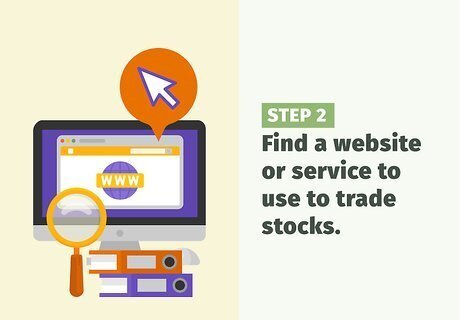
Find a website or service to use to trade stocks. For people who are especially determined to make it on their own, there are a number of websites that will allow you to trade online. Acting as your own broker will give you a greater amount of control, and you’ll save yourself a little money. E*Trade, Fidelity and TD Ameritrade are some of the more popular websites to use. Pay attention to the services offered by some of these companies. Some offer extra advice, tutorials, debit cards, mortgage loans, and other benefits. Weigh the benefits of each service and decide what is best for you.
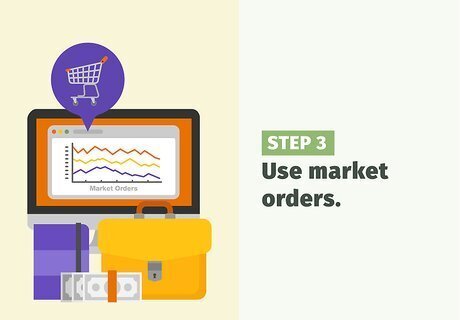
Use market orders. When you trade stocks, you can buy or sell stocks with a market order. This means it will be traded at the best available price at that point in time. It is important to remember, however, that it takes a little while for a sale to go through, and if the market is changing very quickly, you may get a very different price than the one you originally saw. Use stop market orders. Also called a stop-loss order, this is similar to a market order except that the stock will be sold when it reaches a particular price. This is often used to avoid a loss in a falling market.
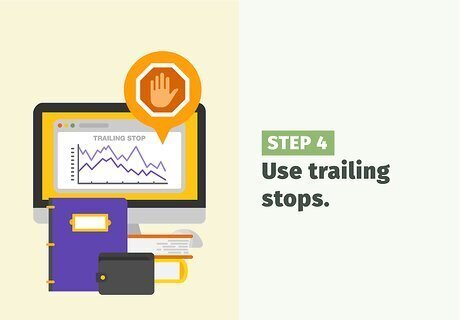
Use trailing stops. These can be used to set an upper or lower limit at which a stock could be bought or sold. Instead of a set price, it is a fluid price which is determined as a percentage of the current price. It is an extremely useful tool which can protect you from huge market swings.

Use limit orders. Another option available to you is to place limit orders. These create a certain price window outside of which your stock will be bought or sold. This can help you get good prices. There is often a special commission on this type of order. Use stop-limit orders. This is a limit order which executes when a specified stopping price is reached. This provides even more control but, as with limit orders, you take the chance that your stock may not actually sell.

Store your money between trades. Many brokerage firms offer accounts which can store your money between trades and pay you a small amount of interest in the meantime. This is very useful and should be factored into your plans if you are using an online service.
Trading Stocks Effectively

Keep enough money in your account. Make sure you have the minimum amount of money required to start and maintain an account. E*Trade, for example, requires just $500 to open an account. Federal regulations require that you have at least half of the cost of the stock you’re purchasing in your account, and that your equity percentage is no less than a quarter of your total investments.

Make sure you are looking at a current quote. Remember that the market changes quickly, and the quote you’re looking at may not be up-to-the-minute. Find a service which allows you to look at real-time prices so that you can get the best deal possible.

Read stock tables and quotes. Stock tables are a great way to evaluate stocks, but they can be difficult to read. You will have to learn how to interpret them and which numbers are the most important, so you can set your priorities and make the best decisions.

Know when to buy and sell. The conventional wisdom is to buy when stocks are at a low price and sell them at a high price later. This is great in theory, but it's difficult to put into practice. There’s no way to know how a stock will move in the future. Instead, look for stocks with great momentum. The idea, of course, is to try to buy at the beginning of an upswing and sell before a big decline. Easier said than done.

Have a good ask price, and make a good bid price. If you have unreasonable expectations, you will have a very hard time buying and selling your stocks. Ask only what is reasonable to ask and don’t expect anything well above or below market value.

Don’t look only at a stock’s price. Consider the entire company. Look at profits and performance. A stock might seem expensive, but if the company continues to make bigger and bigger profits, the stock might actually be cheap.
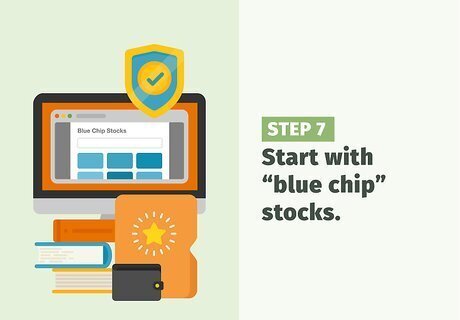
Start with “blue chip” stocks. Blue chips are stocks from companies that have an excellent performance record, and their stocks are known to perform well. These are good stocks to start with if you’re just learning. Common examples include IBM, Johnson and Johnson, and Procter and Gamble.

Don’t get too emotional. You may have seen movies showing stock traders rising to lavish riches with a little determination and smarts. The problem is that investing also requires a certain amount of luck. Don’t get caught in the romanticism of fiction by believing the first start-up company you invest in will be the next Microsoft. Make good decisions and take safe options if you want to succeed in the long run.
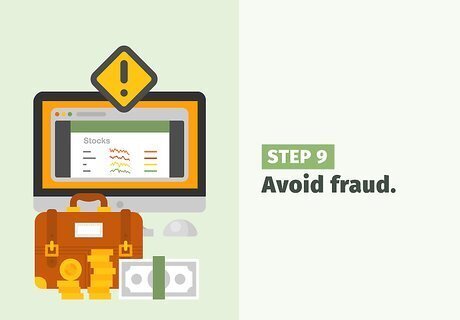
Avoid fraud. There are lots of people in everyday life and on the Internet who would love to sell you bad stocks. Use your judgement: if something sounds too good to be true, it probably is. Make safe bets, rather than getting caught in some get-rich-quick scheme.
Knowing the Market

Do your research. Read everything you can. Never stop learning about the market. You can even practice with virtual money before actually investing. Once you’ve begun investing, you will need to keep up with market developments and research in the industries in which you invest. Watch your company's’ competitors closely. This can feel like being in school all the time, so think twice about stock trading if you're not willing to keep a close eye on the market. Read the company’s annual report as well as the one they file with the SEC. This will give you important information about where the company might be going, and hint at possible problems on the horizon. Read reliable sources of investment information like Standard and Poor’s reports, the Wall Street Journal, Bloomberg or Forbes.

Take time to get to know the market. You’ll want to take some time just watching the market and learning how it works. Watch as stocks rise and fall, and observe the sorts of things which evoke market reactions. When you feel like you understand how the market works, then you can get your feet wet.

Take a hard look at companies before you invest in them. Fully investigate their finances and make sure that they’re what they should be. Look for problems. If there’s a hint of trouble, seriously reconsider. You will need to look at their earnings, sales, debt, and equity. Sales, earnings, and equity should be going up over time. Debt should be going down. You will also want to look at their price-earnings ratio, price-to-sales ratio, return-on- equity, earnings, and ratio of total debt to total assets. These will give you an even deeper feel for a company than just looking at earnings and debt. Also factor in the uniqueness of their product and how much market share they have.

Think about the product. Safe investments are in those things which people need and will continue to need, things like oil, food, medicine, and certain technologies.

Keep long-term performance in mind. The safer way to make money investing is to gain it slowly over time. Stocks which rise very quickly can fall just as quickly. Especially when you first start trading and you’re trying to understand the market, look for companies which have a long, stable history that shows no sign of faltering.
Getting Really Good

Consider using analysis. Learn how to use technical analysis effectively and profitably. This is simply using past price action to anticipate future results. For instance, if a stock has been going up for the last six months, you can assume it will keep going up unless the chart action tells you otherwise. Technical traders act on what they see, not what they feel will happen next. Arrogance kills. Search "wall street newbie" for more information about technical analysis. Know that technical analysis differs from fundamental analysis, which is another stock-picking philosophy. Although both philosophies have their putative benefits, neither has been historically shown to outperform simply keeping your money locked up in sound stocks.

Recognize ups and downs. Understand tension, or the concepts of support and resistance. Support and resistance are considered critical indicators for price continuation, stalls, or reversals. These are visual charted tops and bottoms of a stock. For example, say that a stock trades between $55 and $65. Next time the stock is trading at $55 (support), you would expect it to go back up to $65 (resistance), and vice versa. If this stock goes up to around $68, far beyond resistance of $65, you would no longer expect it to go to its old support at $55. Instead you would expect $65 to be its new support and for the stock to go to new highs. The opposite would be true if the stock broke below $55.
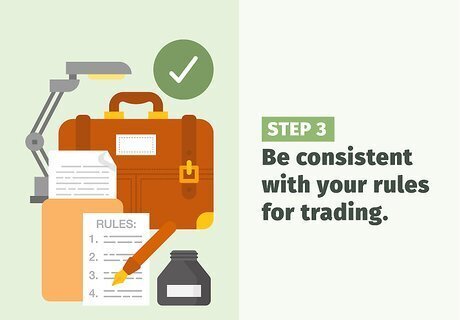
Be consistent with your rules for trading. This is essential for profitability. You must have systemic rules, rules for your trading game, that you must follow. These rules tell you when to get in and when to get out. Follow these rules strictly even if it means taking a loss now and then. For example, if you have a rule to limit losses to 10%, and the stock loses 10%, you sell. Don't argue with the market.

Don't feel obliged to trade every day. If you don't feel confident making a trade, wait and watch.

Practice and learn more. Find a stock investing game which uses fake money. Take a class on the topic. Do whatever you need to do to get comfortable with analyzing financial situations, making decisions, and going through the motions.

Read all the books on trading you can. Over 95% of traders follow the losers as they read obsolete books by old-school systems and indicators of the day without knowing that all this obsolete stuff is used by big money to kill the little guy. Find the latest work from the most successful traders to learn from.

Start small. Start small and increase your trade size as you gain in knowledge and confidence. Don't be discouraged with losses at first. Eventually you too can become a winner, a consistently profitable winner, not on your own this time but with outside support and guidance, actively trading with winners and your own personal and professional coach.

Invest for the long run. It's not sexy, but it should make you money. Keeping your stocks invested for the long term will net you a lot more money than short-term trading (for a variety of reasons). Broker fees, market dips and surges, and the general upward trend of the market all contribute toward making the patient investor a rich investor.
















Comments
0 comment